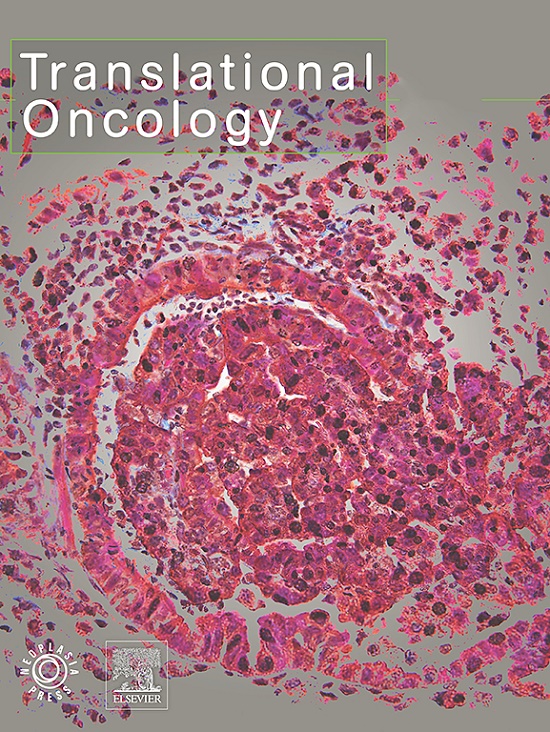Mesenteric benign lymph node enlargement in colorectal cancer: Friend or foe?
IF 5
2区 医学
Q2 Medicine
引用次数: 0
Abstract
Introduction
Benign lymph node enlargement (BLNE) is common in colorectal cancer; however, few studies have investigated its influence on prognosis, clinicopathological features, and pathogenesis.
Methods
A cohort study was conducted to analyze the clinicopathologic features and prognosis of colorectal cancer patients, categorized based on the presence or absence of BLNE. Given the correlation between lymph nodes and immune response, immunohistochemistry, transcriptome analysis, and exon sequencing were employed to further investigate the differences in the immune microenvironment of primary tumors.
Results
Overall, 630 AJCC stage I/II patients were included in the study, with 131 in the BLNE group and 499 in the Non-BLNE (NBLNE) group. Patients in the BLNE group were found to have a significantly better disease-free survival (DFS) (hazard ratio [HR] 0.44, P = 0.016) and overall survival (OS) (HR 0.46, P = 0.011) than those in the NBLNE group. Pathologically, compared with the NBLNE group, the BLNE group had more mature tertiary lymphoid structures (66.7 % vs. 36.5 %, P = 0.002) and higher immunoscores (18.8 % vs. 2.1 %, P = 0.004) in primary tumor tissue. Also, transcriptome analysis showed that, compared with NBLNE, the genes upregulated in BLNE were enriched in immune-related pathways, such as adaptive immune response and immuno-regulatory interactions. Whole-exon sequencing analysis revealed a higher tumor mutation burden (TMB) in the BLNE group [6.03 (5.59, 7.59) vs. 5.33 (4.62, 6.34), P = 0.025].
Conclusion
BLNE is positively associated with the prognosis of colorectal cancer, possibly because patients with BLNE have a stronger anti-tumor immune response.
结直肠癌肠系膜良性淋巴结肿大:是敌是友?
良性淋巴结肿大(BLNE)在结直肠癌中很常见;但其对预后、临床病理特征及发病机制的影响研究较少。方法采用队列研究方法,分析结直肠癌患者的临床病理特征及预后,并根据有无BLNE进行分类。鉴于淋巴结与免疫应答的相关性,我们采用免疫组化、转录组分析、外显子测序等方法进一步研究原发肿瘤免疫微环境的差异。结果共纳入630例AJCC I/II期患者,其中BLNE组131例,Non-BLNE组499例。BLNE组患者的无病生存期(DFS)(风险比[HR] 0.44, P = 0.016)和总生存期(OS) (HR 0.46, P = 0.011)均显著优于NBLNE组。病理上,与NBLNE组相比,BLNE组原发肿瘤组织的三级淋巴组织更成熟(66.7% vs. 36.5%, P = 0.002),免疫评分更高(18.8% vs. 2.1%, P = 0.004)。此外,转录组分析显示,与NBLNE相比,BLNE中上调的基因在免疫相关途径中富集,如适应性免疫反应和免疫调节相互作用。全外显子测序分析显示,BLNE组肿瘤突变负荷(TMB)更高[6.03(5.59,7.59)比5.33 (4.62,6.34),P = 0.025]。结论BLNE与结直肠癌预后呈正相关,可能与BLNE患者具有较强的抗肿瘤免疫应答有关。
本文章由计算机程序翻译,如有差异,请以英文原文为准。
求助全文
约1分钟内获得全文
求助全文
来源期刊

Translational Oncology
ONCOLOGY-
CiteScore
8.40
自引率
2.00%
发文量
314
审稿时长
54 days
期刊介绍:
Translational Oncology publishes the results of novel research investigations which bridge the laboratory and clinical settings including risk assessment, cellular and molecular characterization, prevention, detection, diagnosis and treatment of human cancers with the overall goal of improving the clinical care of oncology patients. Translational Oncology will publish laboratory studies of novel therapeutic interventions as well as clinical trials which evaluate new treatment paradigms for cancer. Peer reviewed manuscript types include Original Reports, Reviews and Editorials.
 求助内容:
求助内容: 应助结果提醒方式:
应助结果提醒方式:


